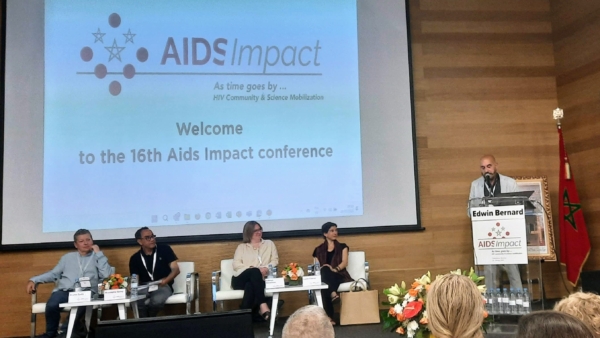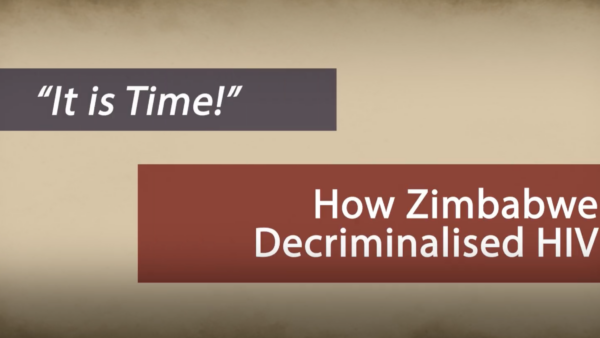Criminalising HIV transmission stigmatises HIV rather than shows concern for rape
Charging an HIV positive rapist with attempted murder for exposing his victim to the condition is counter-productive. The investigation and prosecution of the rape is more important.
A recent article on TimesLIVE highlighted the prosecution of a teacher charged with the rape of two young boys. The teacher is also charged with attempted murder for exposing one of the boys to HIV.
The rape charges should be prosecuted rigorously. The attempted murder charge should be dropped immediately. We give three reasons why: first, it distracts from the real issue – rape. Second, it isn’t supported by the science. Third, from a public health perspective, it’s dangerous.
The use of criminal charges, such as attempted murder, against people with HIV is referred to as the “criminalisation of HIV transmission” and has been endorsed by some but is opposed by most experts, human rights organisations and public health authorities such as the World Health Organisation (WHO) and UNAIDS.
Investigation and prosecution of rape is critical and desperately needs to be improved. We must prioritise this and we can’t afford to be distracted. The HIV status of the rapist is an aggravating factor that may speak to the appropriate sentence for the rapist, but adding an attempted murder charge smacks more of stigma against people with HIV than concern for rape.
To mix rape up with criminalisation of HIV transmission does a disservice to people who have been raped or are vulnerable to rape as well as a disservice to the fight against HIV. Also, to conflate rape and the criminalisation of HIV transmission is to victimise the exact demographic we intend to protect: women. This is not only because it distracts from the real issue of rape, but also because it loads the probability of prosecution towards women. In South Africa, like most places that have used criminal law to punish the transmission of HIV, one of the requirements for prosecution is that the accused know his or her status. Women know their HIV status at higher rates than men and, therefore, are more vulnerable to prosecution under these laws.
The science doesn’t support the charge of attempted murder for at least two reasons. First, for a person adherent to treatment, the risk of transmitting HIV is very low even without condom use, although this is still recommended for all people as an effective means of preventing pregnancy and transmission of sexually transmitted infections, including HIV. Second, even if transmission occurs, HIV isn’t a death sentence and giving it to someone, while serious, isn’t murder.
The practical goal of antiretroviral therapy, which keeps millions of people with HIV alive and thriving around the globe, is to reduce a person’s viral load (the measure of the HIV virus in the blood) to an undetectable level. The best evidence shows that people who have a viral load under 200 (in other words, people adherent to treatment) do not transmit HIV during unprotected vaginal or anal sex (although, again, condom use remains critical for reasons explained above.) Moreover, even if transmission occurs, the latest studies show that people adherent to treatment live long, healthy lives.
The importance of treatment leads to the next point: criminalising the transmission of HIV, as a general matter, stands to do far more harm than it could ever do good. As UNAIDS executive director Michel Sidibé explains, “Laws and prosecutions do not stop the spread of HIV. There is no correlation between the existence of these laws and the drop in HIV infections”. These types of criminal laws are more likely to perpetuate the spread of HIV than they are to curb it.
The vast majority of HIV transmissions occur between people who don’t know their HIV status. In order to reduce transmission, we must focus on encouraging people to know their status and get on treatment. Criminalising the transmission of HIV creates an incentive against knowing one’s status and further complicates the already-difficult discussion of disclosing one’s status to a partner.
In the context of consensual sex, some have argued that the criminalisation of HIV transmission will incentivise disclosure between potential sexual partners.
Should we encourage disclosure of HIV status between potential partners? Sure, in many cases. But that question gives rise to another: who has responsibility for safe sex? Only people with HIV? Or should everyone be encouraged to ensure that his or her sex is safe regardless of status or who his partner is?
Moreover, there’s no evidence that criminalising non-disclosure is an effective incentive for disclosure.
Finally, how does the historic and persistent stigma against people with HIV factor into an assessment of the costs and benefits of penalising non-disclosure?
If we want to encourage disclosure, we have a responsibility to create an environment in which it’s safe and comfortable for people to be open about having HIV if they so choose. The armament of the criminal system drives fear and stigma. We can’t have it both ways.
We want to empower people to make safe, informed choices about sex. How do we do this? It will help to be clear and honest about sex, rape, HIV, where the three are connected and where they aren’t.
One thing’s for sure though – we can’t prosecute our way out of the HIV epidemic.







